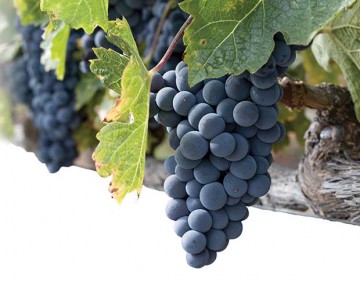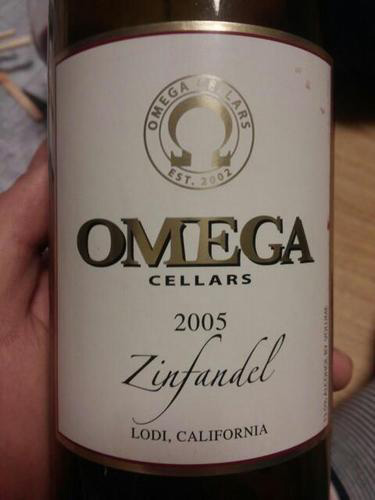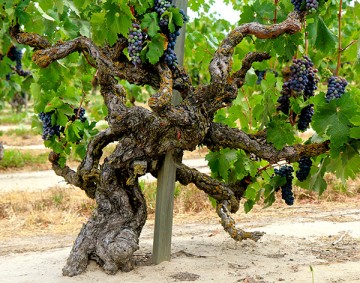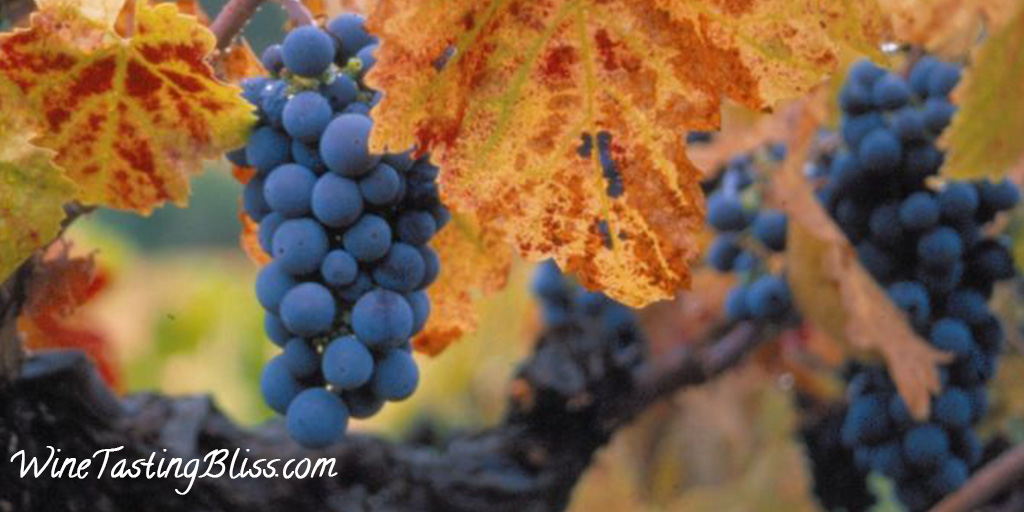As I prepared for our next wine tasting trip to the Lodi region, it was only natural to think fondly of the Zinfandel grape. Lodi is famous for producing powerful Zins from 100 year-old vines. Then it hit me: what, exactly, is a Zinfandel? It turns out that the Zinfandel grape has some mystery in its background, but I can save you some time on Google, because here is what I discovered.
 I was surprised to discover that very little was know about the ancestry of the Zinfandel grape until quite recently. In the late 60’s, researchers at U.C. Davis found that the California Zinfandel grape was genetically similar to the Italian Primitivo. By 1994 it was proven that they were not merely similar, but genetically identical. By the end of the decade, genetic testing showed that all of the Zinfandel in California probably came from a single cutting brought to America from Croatia.
I was surprised to discover that very little was know about the ancestry of the Zinfandel grape until quite recently. In the late 60’s, researchers at U.C. Davis found that the California Zinfandel grape was genetically similar to the Italian Primitivo. By 1994 it was proven that they were not merely similar, but genetically identical. By the end of the decade, genetic testing showed that all of the Zinfandel in California probably came from a single cutting brought to America from Croatia.
 This Croatian Primitivo grape rattled around the east coast of the U.S. starting in the 1820’s. Because of the inhospitable climate, it was grown in hothouses. A Boston nursery offered “Zinfandel” vines for sale in 1832, and the name stuck. All it took was the Gold Rush in California to draw this newcomer grape westward. By the end of the century, Zinfandel was the most widely planted grape in the state. A legend had found its true home!
This Croatian Primitivo grape rattled around the east coast of the U.S. starting in the 1820’s. Because of the inhospitable climate, it was grown in hothouses. A Boston nursery offered “Zinfandel” vines for sale in 1832, and the name stuck. All it took was the Gold Rush in California to draw this newcomer grape westward. By the end of the century, Zinfandel was the most widely planted grape in the state. A legend had found its true home!
 Zinfandel grapes love the warm days and cool nights of California, especially in San Joaquin, Stanislaus and Madera County. The Lodi region in particular has become known for robust Zinfandel wines, with lots of fruit up front and powerful spice, all riding on a sea of (relatively) high alcohol. With over 10,000 acres of Zinfandel vines, many over 100 years old, there’s a quality bottle of Zinfandel being poured on nearly every intersection of Lodi!
Zinfandel grapes love the warm days and cool nights of California, especially in San Joaquin, Stanislaus and Madera County. The Lodi region in particular has become known for robust Zinfandel wines, with lots of fruit up front and powerful spice, all riding on a sea of (relatively) high alcohol. With over 10,000 acres of Zinfandel vines, many over 100 years old, there’s a quality bottle of Zinfandel being poured on nearly every intersection of Lodi!
 Most Zin vines in the region are head trained, which means that, unlike many grape varietals, the vines are not grown on long wires but branch out in every direction from a vertical trunk as thick as a person’s arm. This lets each grape cluster find its own sunshine, but means that every step in the grape growing process must be done manually. That means a lot of work, but most wine lovers will say that the extra effort is well worth it.
Most Zin vines in the region are head trained, which means that, unlike many grape varietals, the vines are not grown on long wires but branch out in every direction from a vertical trunk as thick as a person’s arm. This lets each grape cluster find its own sunshine, but means that every step in the grape growing process must be done manually. That means a lot of work, but most wine lovers will say that the extra effort is well worth it.
Properly educated on the lovely Zinfandel grape, I feel that I’m ready for our tasting tour. Past visits to Lodi have featured Zins from d’Art Wines, Mettler Family Vineyards, Harmony Wynelands, Harney Lane and Omega Cellars. Where will we choose to taste in Lodi this trip? We’ve done our research, printed our maps, packed up some pens (Yes, really. Be on the lookout for your own.) and packed our cooler with water and snacks. Check back in a few days to read all about how it went.
About the Author: John grills a mean steak and is always in the market for another wine fridge. Believes that if a winery has more than 10 employees, it's probably too big. Buys wine faster than he drinks it, but who cares?


